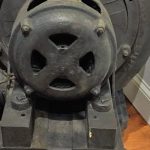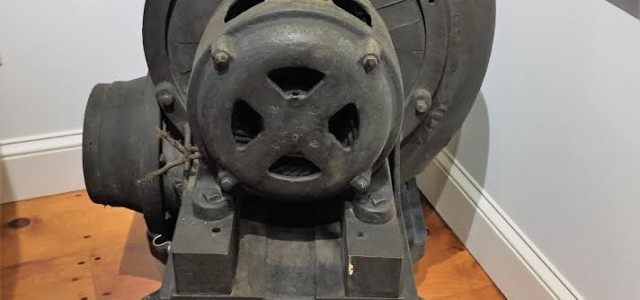 Source: The Cape Cod Chronicle – capecodchronicle.com
Source: The Cape Cod Chronicle – capecodchronicle.com
By: Dan Broderick
It’s really interesting, even intriguing, how things (they are called gifts if we want them, or other unusual words, if we don’t) end up in a museum.
Viewing these potential donations is usually pre-arranged by a phone call. The caller indicates they have a number of things that might be of historical interest. To the potential donor, everything has sentimental value.
“We are moving and want to donate our items. Would you be interested in examining some of our special belongings?”
Then, there are potential presenters who cut to the chase and invite us to go through their attic because “we must sell the house.”
On a certain day by appointment, it could be a small box truck backing down to our lower level driveway where a couple of dusty donators begin eagerly unloading corrugated boxes filled with items for us to examine. Another day it could be a lone, teary-eyed generous visitor at the upper level entrance carrying treasured photograph albums from decades back, of all scenes Chatham.
But this day was my lucky day! A phone call came in from Chatham Ford. What? Why?
“We have a motor here you may be interested in – we think it was used to inflate blimps.”
Antique pump used to inflate blimps at the Chatham Naval Air Station.
Courtesy of the Chatham Historical Society.I could hardly believe my ears! A jolt of adrenaline shot through me. A sense of urgency swept over me. I’ve got to get there before somebody else snags this treasure! It’s only about a minute and half down the road but I didn’t have a second to lose.
Tires smoking, I jerk to a stop in the Ford dealer parking lot. Good, I don’t see anyone else here as I prayed the pump was still here. Rae, the general manager, led me to a very distant, dark, dusty room saying, “It’s been here for about 70 years, and you’re just in time. We were going to get rid of it.”
I was about to come face to face with one of the holy grails of early Naval aviation!
I quickly checked the manufacturer’s specification placard on this beauty. Yes! It had been delivered to the Chatham Naval Air Station in 1918, just after we entered World War I.
I asked Rae if I needed to post a guard on this treasure and she happily assured me it was not necessary. At 350 pounds, this motor was not going to go anywhere today. I quickly returned to the Atwood to report my invaluable find to Danielle Jeanloz, our executive director.
“Don, this is a guy thing,” she said. “What in the world would we do with a monster motor?”
I quickly described all the exalted aviation benefits this pump would provide for our “Chatham in the Military” exhibit. Even the curiosity factor of a young visitor would be piqued. “What in the world is That thing?”
I believe the only possible reason our director relented was not wanting to see a grown man cry. After lovingly removing nearly 100 years of dust and sprucing “her” up, my endearing “little” motor/pump that was once used to inflate the B-class blimp (which guarded our shores) with hydrogen gas, was ready to be debuted in our new exhibit.
Yes, this is the very same flammable hydrogen gas that mysteriously exploded the German dirigible Hindenburg in a fiery disaster at Lakehurst, N.J in 1937.
Thanks to our director, this pump is now one of the centerpieces of our 2017 “Chatham in the Military” exhibit.
Source: The Cape Cod Chronicle – capecodchronicle.com

